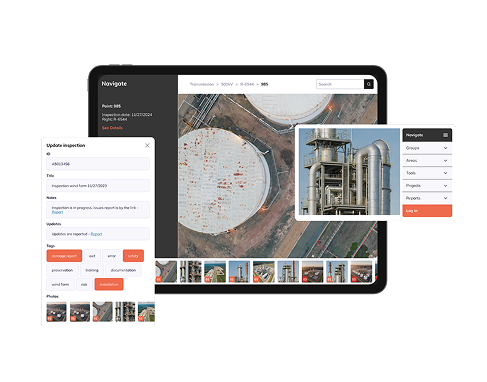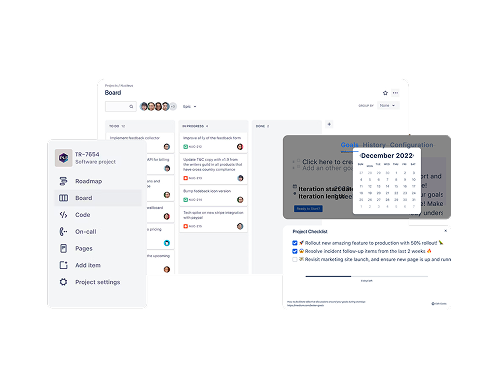Quality Assurance Automation for A Virtual Training Lab Service
Helping maintain the quality of a cloud-based software solution for 6+ years using our vast automation testing expertise.
About Project
Solution
Automation testing, Functional testing, UI testing, Regression testing, Performance testing, Localization testing
Technologies
Google Cloud Platform, Amazon Web Services, Microsoft Azure, Selenium, Jenkins, SoapUI, REST Assured, BrowserStack, Netsparker, Maven
Country
The Netherlands
Industry
Client
Our client for this project is a major online training delivery company that offers a selection of solutions for mostly enterprise-level customers who want to deliver effective training in a convenient environment. Our work revolves around one of those solutions â an application that allows users to create and run virtual training labs using cloud services, including Google Cloud, Azure, and AWS.
Project overview
Let us stand on guard of your app’s quality.
Before
- Only minimal manual test coverage
- No testing strategy or test plan
- Large, constantly growing databases
- Lack of communication between departments
After
- Full test coverage achieved from scratch
- Detailed test strategy designed & implemented
- Connecting and managing all databases
- Smooth cross-team communication established
Project Duration
6 years
Team Composition
1 QA Lead
2 Automation QAs
Challenge
The client approached us to perform quality assurance on the product over six years ago, when the solution had a bare minimum of functionality and was in its early stages. Our team was tasked with automating the tests from the ground up, which is a challenge of its own, as there were barely any contributions from the manual QA team to base our work upon. Other key objectives and challenges for this project included:
Achieving the most practical use of the clientâs resources while maintaining the highest quality of testing.
- Developing a comprehensive testing strategy from scratch, given that there was little to no documentation at the start of the project;
- Creating in-depth integration tests to check how the core solution interacts with additional products it’s paired with;
- Finding an effective way to work with large databases that are constantly getting bigger;
- Checking how accurately the application calculates the time and money spent on cloud services within one event;
- Ensuring smooth communication and collaboration between our team, the manual QA team, and the development team, which are all located in different parts of the world;
- Implementing various complex technologies, mainly cloud-related, to fulfill the requirements of the stakeholders;
- Setting up an effective CI/CD process despite the ever-growing number of tests;
- Verifying the correct localization of the project, which is available in 5+ languages;
Solutions
After analyzing the existing state of the application and setting the groundwork for the collaboration with the manual QA team, we created a test plan that we have since updated and enhanced countless times to meet the changing requirements of the product. At different stages of the project, our team consisted of:
- 1 Automation QA Lead
- 3 Automation QAs
From the very beginning, our team focused on end-to-end testing to deliver the most consistent and reliable results. Besides that, we used:
- Smoke testing
- Regression testing
- UI testing
- Functional testing
- Localization testing
- Performance and load testing
- Security testing
Over the course of the project, we have covered over 77% of functionality tests, up to 92% of API tests, and a large chunk of performance, load, and security tests. Overall, we have automated over 1,100 tests, and that number continues to grow. Through daily meetings and effective communication with the development and manual QA teams, we have ensured seamless collaboration across all departments.
In the early stages of the productâs development, the team on the clientâs side was dedicating most of their time and effort to the functionality of the product, while the performance of the app was often treated as an afterthought. After our team discovered significant performance issues, we updated the testing strategy to include this aspect as well. As a result of our input, the development team has been successfully optimizing the applicationâs performance for over a year now.
As soon as the applicationâs user base started growing, we began testing not only the core product, but also the features and modules of the product tailored to the needs of the end customers. To date, we have tested over 20 of those solutions and continue to provide ongoing support.
Technologies
Our choice of technologies for each project is what determines its success, along with our testing expertise and our planning and strategy creation skills.
- Google Cloud Platform
- Amazon Web Services
- Microsoft Azure
- SoapUI
- Jenkins
- Selenium
- BrowserStack
- REST Assured
Types of testing
Results
Our work on this project has been continuing for over 6 years and is still going strong, so much so that we are currently the only testing team working on the project. Thanks to the continuous use of testing automation, we have been able to significantly increase the efficiency of testing and locate many of the bugs missed by the manual QA team. The feedback from the client has been largely positive, and our level of responsibility has grown accordingly.

User engagement increased by

Automation coverage reached

App load time dropped from

Support tickets decreased by
Reduce manual effort and increase test coverage with automation!
Reach out to our QA team today
Bruce Mason
Delivery Director


